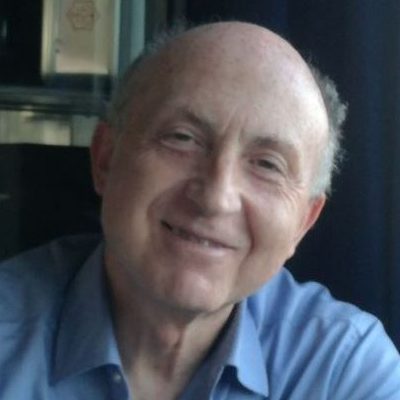Bioinspired Catechol-Based Systems: Chemistry and Applications
A special issue of Biomimetics (ISSN 2313-7673).
Deadline for manuscript submissions: closed (30 June 2017) | Viewed by 109300
Special Issue Editors
Interests: structure, synthesis, physicochemical properties, and reactivity of melanins; polydopamine and related bioinspired functional materials for underwater surface functionalization and hybrid nanostructures for bioelectronics and biomedical applications; design, antioxidant properties, and reactivity of bioactive phenolic and quinone compounds; free radical oxidations and nature-inspired redox-active systems for biomedical and technological applications; chemistry and physicochemical properties of natural or bioinspired heterocyclic compounds; bioorganic chemistry of organic sulphur and selenium compounds; model reactions and transformation pathways of polycyclic aromatic hydrocarbons and derivatives of astrochemical relevance
Special Issues, Collections and Topics in MDPI journals
Interests: hybrid colloids and surfaces, biomimetic functional nanostructures, and micro- or nanoparticles for smart applications and encapsulation and delivery systems
Special Issue Information
Dear Colleagues,
The imitation of Nature’s chemical principles and logic is a major competitive strategy for the design and implementation of innovative molecular devices and systems for advanced technological and biomedical applications. A unique source of inspiration and opportunities in this context is provided by catechols and their derivatives, a specific class group of phenolic compounds that provide the core reactive unit in a number of bioactive compounds and biopolymers. The aim of this Special Issue is to collect together the contributions from different laboratories working on catechol systems. By covering issues from basic chemistry and biochemistry to free radical and computational modeling, new antioxidants, biocompatible structures for coatings, hydrogels and smart polymers for biomedical applications, it provides an updated view of the status quo and perspectives in a rapidly growing field of basic and applied research. The present collection of papers, taking advantage of open access format, is expected to provide a paradigm of the power of biomimetic approaches for discovering new important research avenues and for innovative solutions in biomedicine and technology.
To further its aims of combining basic research and applications, this Special Issue is divided into two main parts:
Part a) Chemistry, covering topics such as: catechol chemistry; o-semiquinone free radicals; quinone synthesis; computational investigation of semiquinone free radicals and complex catechol systems; the thiol o-quinone coupling reaction; antioxidants; catechol quinone biochemistry; dopa chemistry in mussel byssus proteins.
Part b) Applications, including catechol-based functional polymers, mussel-inspired surface functionalization and coatings, catechols for nanotechnological applications, natural catechols in materials science.
We believe that this initiative will fill an important gap in biomimetic chemistry and will stimulate the enthusiastic contributions of leading experts in the field.
Prof. Marco d’Ischia, Dr. Daniel Ruiz-Molina
Guest Editors
Manuscript Submission Information
Manuscripts should be submitted online at www.mdpi.com by registering and logging in to this website. Once you are registered, click here to go to the submission form. Manuscripts can be submitted until the deadline. All submissions that pass pre-check are peer-reviewed. Accepted papers will be published continuously in the journal (as soon as accepted) and will be listed together on the special issue website. Research articles, review articles as well as short communications are invited. For planned papers, a title and short abstract (about 250 words) can be sent to the Editorial Office for assessment.
Submitted manuscripts should not have been published previously, nor be under consideration for publication elsewhere (except conference proceedings papers). All manuscripts are thoroughly refereed through a single-blind peer-review process. A guide for authors and other relevant information for submission of manuscripts is available on the Instructions for Authors page. Biomimetics is an international peer-reviewed open access monthly journal published by MDPI.
Please visit the Instructions for Authors page before submitting a manuscript. The Article Processing Charge (APC) for publication in this open access journal is 2200 CHF (Swiss Francs). Submitted papers should be well formatted and use good English. Authors may use MDPI's English editing service prior to publication or during author revisions.
Keywords
- computational studies
- quinones, semiquinones
- antioxidants
- cross-linking
- free radicals
- metal chelates
- biomaterials and biopolymers
- functional systems
- sensors
Benefits of Publishing in a Special Issue
- Ease of navigation: Grouping papers by topic helps scholars navigate broad scope journals more efficiently.
- Greater discoverability: Special Issues support the reach and impact of scientific research. Articles in Special Issues are more discoverable and cited more frequently.
- Expansion of research network: Special Issues facilitate connections among authors, fostering scientific collaborations.
- External promotion: Articles in Special Issues are often promoted through the journal's social media, increasing their visibility.
- Reprint: MDPI Books provides the opportunity to republish successful Special Issues in book format, both online and in print.
Further information on MDPI's Special Issue policies can be found here.








